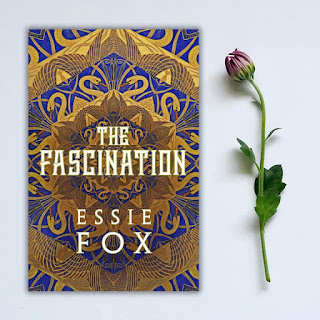I am delighted to introduce you today to Kellyn Thompson who has kindly agreed to answer some of my questions and to talk about her novel, The Unexpected Inlander.
Welcome to Books, Life and Everything, Kellyn.
When did you first realise you were going to be a writer?
Honestly, I'm not sure I've really realised it, yet. Perhaps that is Impostor Syndrome talking; perhaps it is the day job telling me I'm not a writer because I'm already something else; perhaps it is because I have been writing all my life, so now it is just more of the same—except other people might read it now (scary!). Anyway, come back and ask me again when I *am* one.
Tell us about your latest book without giving the plot away.
The Unexpected Inlander is an unconventional love story that takes the reader through one man's journey of discovering and overcoming internal bias, as well as learning that change begins within. Though not *hard* sci-fi, it is set in a future time when human genome modifications are commonplace.
Anyway, here is a short summary:
Chris grew up in a society where genetic modifications are applied to human embryos to eliminate disease and prevent illness. He likes to think he is more tolerant of those without the modifications -- the Purebreds -- than his peers are. But then he meets and falls in love with one. Jenna carries herself in a way that subtly defies the society around them, refusing to be affected by the way everyone treats her. As a Purebred, she is supposed to be dumb, helpless, and generally "less" than her modified peers. Chris sees how differently she is treated by others, and this forces him to see his own internal bias and the assumptions that lurked beneath his conscious thoughts before he met her. As the story unfolds, people are confused by their relationship, but Chris is determined to show them they are wrong about her and about Purebreds in general.
How do you go about researching detail and ensuring your books are realistic?
I actually do a lot of research to make sure the science I'm writing is not very realistic or close to current methods and what is known today. The reason I do this is because I know how frustrating it can be when an author uses a method that is currently used or something that is currently known and tries to fit it into the story and setting of the science fiction they write. It's better to just make it up for multiple reasons—1, it's fiction (it's supposed to be made up); 2, it can be a disservice to the scientists who actually use that knowledge or technology for different purposes; and 3, it can be misleading to non-scientists who might not be able to tell what part of it you are making up.
Now, if you're talking about non-science things, my personal favorite search engine is DuckDuckGo.
Which aspects of your writing do you find easiest and most difficult?
The easiest part for me is writing the first draft. It's exciting, exhilarating, and at times totally unpredictable.
Editing it is the awful part because it can always be better. In many ways, it is never done.
Are there any secret references hidden in your books?
Any time I write a scene that mentions or involves food, my husband always interrupts me and asks, "What are they eating?" So, any time there is a food mentioned, it is one he suggested.
Also, the use of the word "crisper" in chapter 2 of The Unexpected Inlander is a nod to the CRISPR-Cas9 gene editing technology and the revolution it has sparked.
Does writing energize or exhaust you?
Writing fiction totally energizes me! Writing about myself...well, that's exhausting.
If you could tell your younger writing self anything, what would it be?
Write more. But edit morer.
That's great, Kellyn. Thanks so much for dropping by.
About the Author
Kellyn Thompson is a science nerd who loves playing out the
what-ifs that arise in her mind when she reads the latest scientific
publications and studies. Building on that, she started writing short stories, and one of those ideas turned into her debut novel, The Unexpected Inlander.When she's not sciencing, she's reading, writing, hiking, and trying to teach her cats the value of love, empathy, and intact fabric on furniture.







Comments
Post a Comment